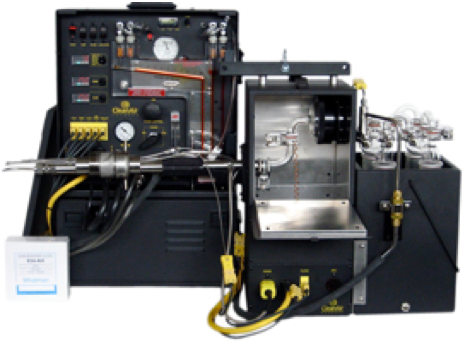|
 The aim of the Hydrogen Chloride and Water Vapour Proficiency Testing Scheme is to assess the performance of test houses in sampling and measuring of the more reactive and difficult to measure pollutants. The Standard Reference Methods for HCl and water vapour, EN1911:2010 & EN14790:2017 respectively, require manual sampling and offline analysis. Both components of the measurement can lead to the introduction of errors. The aim of the Hydrogen Chloride and Water Vapour Proficiency Testing Scheme is to assess the performance of test houses in sampling and measuring of the more reactive and difficult to measure pollutants. The Standard Reference Methods for HCl and water vapour, EN1911:2010 & EN14790:2017 respectively, require manual sampling and offline analysis. Both components of the measurement can lead to the introduction of errors.
The scheme involves the sampling of HCl and water vapour from the NPL stack simulator in a matrix of oxygen, carbon dioxide and nitrogen. 4 test levels of HCl, H2O will be provided with the CO2 and O2 levels being representative of combustion, waste incineration and gas turbine emission sources.
Participants will be required to provide offline analysis results within 20 working days of the measurement taking place.
Participants will also be able to make real-time continuous measurements of HCl and water vapour, should they desire.
Concentrations for HCl & Water Vapour Proficiency Testing:
Test |
HCl
(ppm) |
H2O
(%) |
O2
(%) |
CO2
(%) |
Maximum of Range |
50 |
20 |
21 |
15 |
Maximum Concentrations for HCl & Water Vapour tests
The NPL stack simulator is able to reproduce a wide range of simulated stack gases under controlled conditions. The simulator is a recirculating system which recreates a cross section of a 1.5 m duct. Four standard five-inch ports are available for fixed sampling probes or cross stack instruments. Assigned values are calculated by measurement of the gases within the simulator using well characterised and calibrated real time analysers. Standard deviation for proficiency testing is derived by reference to the relevant CEN standards to which participants are accredited. |